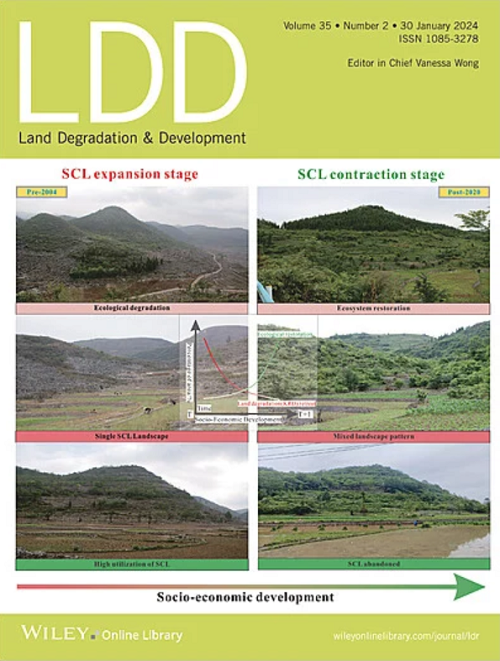Plant Functional Composition, Ecological Niche Distribution, and Biodiversity Measures Across Urban Grasslands of Different Size, Localisation, and Type
IF 3.6
2区 农林科学
Q2 ENVIRONMENTAL SCIENCES
引用次数: 0
Abstract
Urban grasslands (UGs) are among the most abundant type of green infrastructure in cities worldwide. They deliver a range of ecosystem services and perform numerous ecosystem functions. To ensure the multifunctionality of UGs, enhancing their biodiversity is crucial; however, owing to urbanisation effects and inappropriate management, UGs often have low species richness. While urban vegetation has been studied in general, detailed ecological insights into the patterns of vegetation functional, ecological, and compositional attributes across different size, localisation, and type of UGs are still lacking. Better ecological knowledge regarding UGs vegetation will facilitate management aimed at increasing their biodiversity and multifunctionality. In the city of Wrocław, Central Europe, we surveyed 244 UG patches which differed in size (small, medium, and large), type (lawns, embankments, road verges, and UG in parks), and locality (city centre and periphery). Functional traits composition, ecological niches distribution, and biodiversity measures were assessed based on plant species composition and information obtained from open databases, including disturbance indicator values for plants. The results showed that the main trade-offs in functional traits composition and species niche distribution were related to biomass loss associated with mowing frequency. The examined factors (patch size, locality, and type) significantly affected UG vegetation, with each having distinct influences on biodiversity and multifunctionality. Many factors related to urban expansion (e.g., urban heat islands, soil reaction change, landscape fragmentation, biological invasions) are difficult to mitigate. However, proper management, such as extensive mowing, could help moderate the negative impacts of urbanisation. Increasing or maintaining a high proportion of forbs in vegetation would also enhance the multifunctionality of UGs.不同规模、地域和类型城市草原植物功能组成、生态位分布及生物多样性测度
城市草地(UGs)是全球城市中最丰富的绿色基础设施类型之一。它们提供一系列的生态系统服务,并执行许多生态系统功能。为确保UGs的多功能性,加强其生物多样性至关重要;然而,由于城市化的影响和管理不善,UGs的物种丰富度往往较低。虽然对城市植被进行了总体研究,但对不同规模、区域和类型的UGs的植被功能、生态和组成属性模式的详细生态学见解仍然缺乏。更好地了解ugg植被的生态知识将促进旨在增加其生物多样性和多功能性的管理。在中欧城市Wrocław,我们调查了244个UG斑块,其大小(小、中、大)、类型(草坪、堤防、道路边缘和公园中的UG)和位置(城市中心和外围)不同。基于开放数据库中植物的物种组成和干扰指示值等信息,对植物的功能性状组成、生态位分布和生物多样性措施进行了评价。结果表明,功能性状组成和物种生态位分布的主要权衡与刈割频率相关的生物量损失有关。研究的因子(斑块大小、位置和类型)显著影响UG植被,每个因子对生物多样性和多功能性有不同的影响。许多与城市扩张相关的因素(如城市热岛、土壤反应变化、景观破碎化、生物入侵)难以缓解。然而,适当的管理,如广泛的割草,可以帮助缓和城市化的负面影响。增加或保持植被中较高比例的草本植物也会增强植物的多功能性。
本文章由计算机程序翻译,如有差异,请以英文原文为准。
求助全文
约1分钟内获得全文
求助全文
来源期刊

Land Degradation & Development
农林科学-环境科学
CiteScore
7.70
自引率
8.50%
发文量
379
审稿时长
5.5 months
期刊介绍:
Land Degradation & Development is an international journal which seeks to promote rational study of the recognition, monitoring, control and rehabilitation of degradation in terrestrial environments. The journal focuses on:
- what land degradation is;
- what causes land degradation;
- the impacts of land degradation
- the scale of land degradation;
- the history, current status or future trends of land degradation;
- avoidance, mitigation and control of land degradation;
- remedial actions to rehabilitate or restore degraded land;
- sustainable land management.
 求助内容:
求助内容: 应助结果提醒方式:
应助结果提醒方式:


